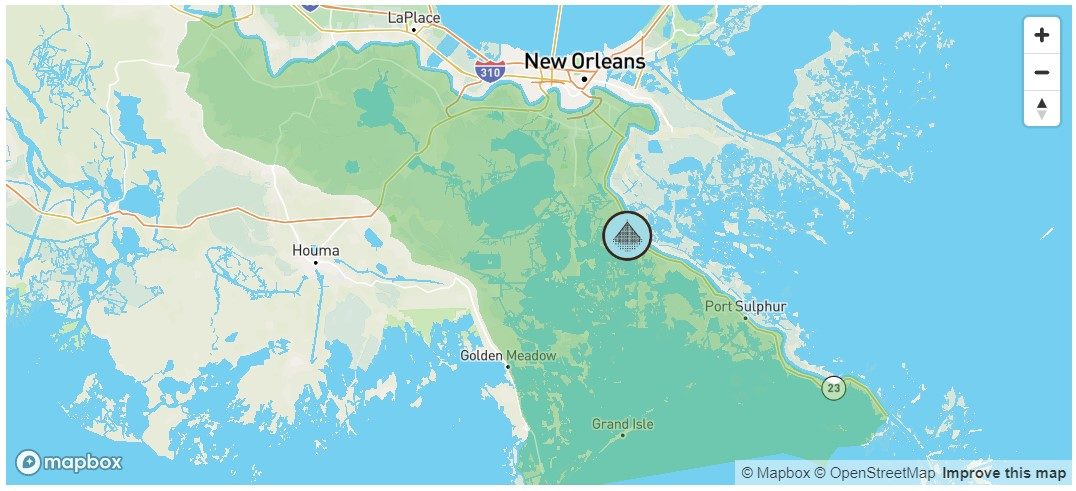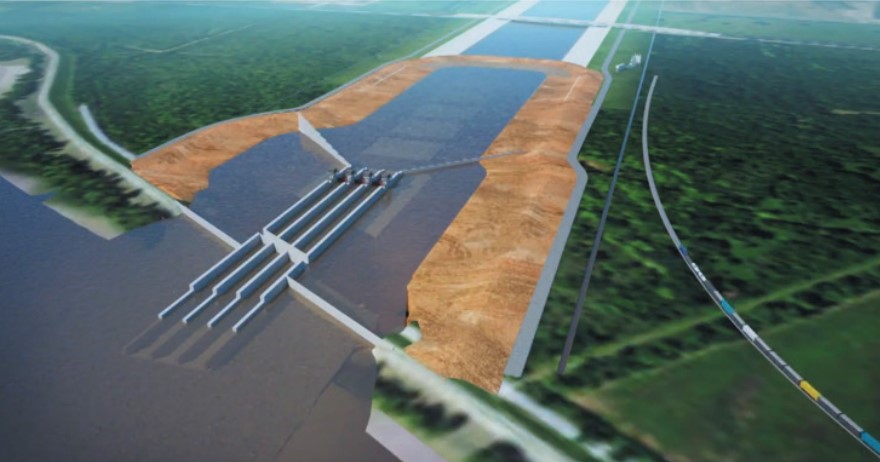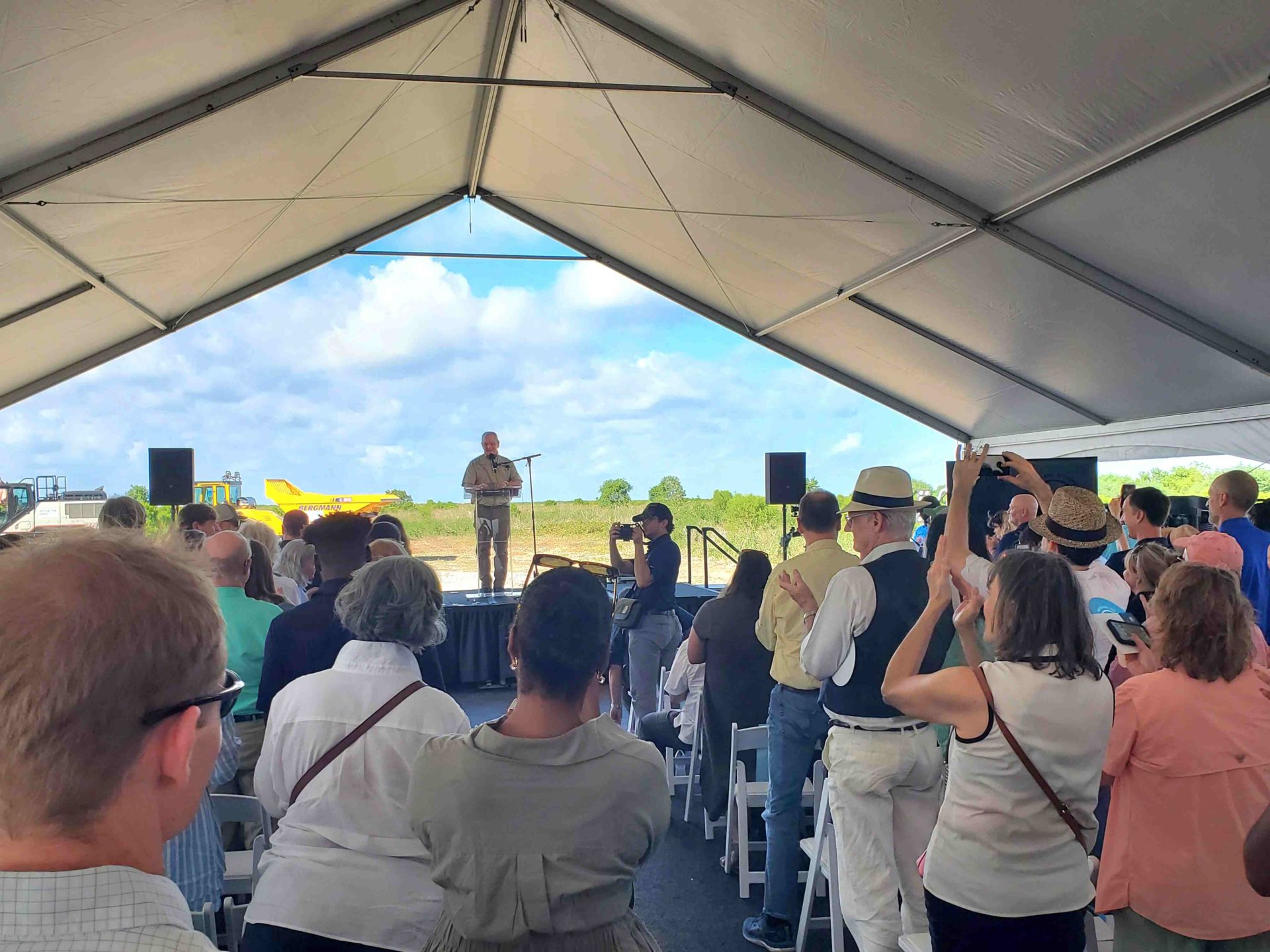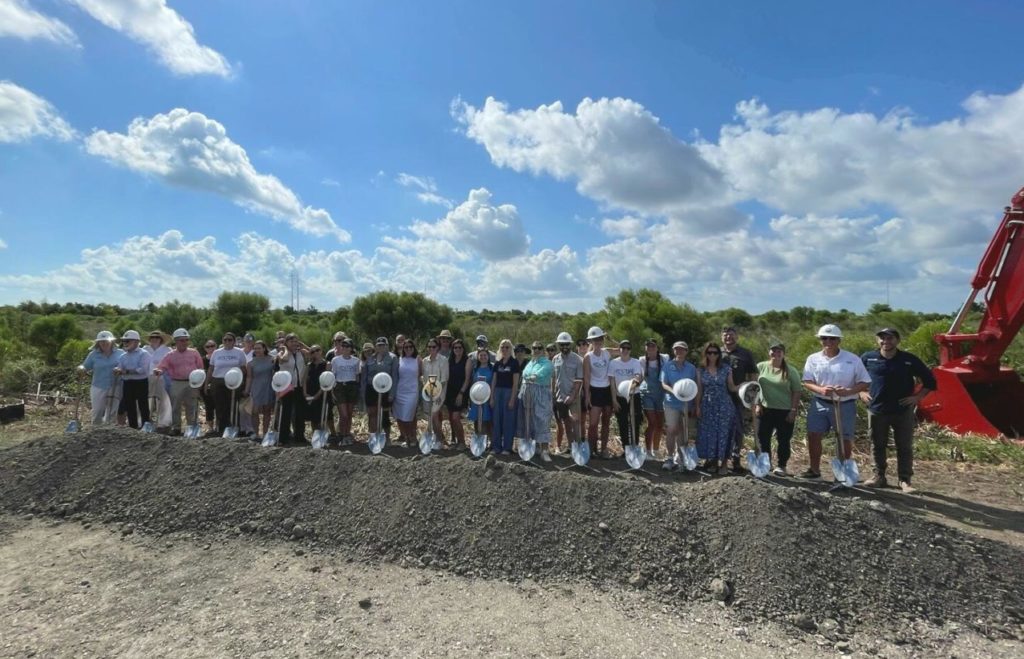On August 10, 2023, hundreds of people gathered in Belle Chasse, La to celebrate the groundbreaking of the Mid-Barataria Sediment Diversion – the largest single ecosystem restoration project in U.S. history. After decades of discussions, studies and planning, dirt is finally moving to allow the Mississippi River to do what it’s done for millennia: deposit sediment and nutrients to surrounding wetlands and build land.
Large-scale projects like this are needed to meet the challenges we face along coastal Louisiana. When the levees were built to contain the river nearly 100 years ago after the Great Flood of 1927, it was known that there would be consequences to the ecosystem. Over 2,000 square miles of land has been lost since 1932 . Barataria Basin alone has lost over 400 square miles in that time.
After Hurricane Katrina in 2005, the Louisiana Coastal Protection and Restoration Authority (CPRA) was established to lead coastal protection and restoration efforts using the latest science and engineering to save wetlands and protect people. The Coastal Master Plan is the guiding document of projects to help meet this charge. The Mid-Barataria Sediment Diversion has long been a cornerstone of that plan to divert sediment, freshwater, and nutrients to the basin – sediment that would otherwise be lost to the Gulf of Mexico.
The $3 billion project will create land, restoring critical wildlife habitat and protecting coastal communities in Jefferson, Orleans, and portions of Plaquemines Parishes from the worst effects of storms by providing a buffer for storm surge and reducing wave impacts.


The project is funded with money from the Deepwater Horizon disaster. Barataria Basin received the heaviest oiling from the spill, which doubled (or even tripled) the rate of land loss in the basin. Barataria Basin is experiencing some of the highest rates of land loss in the world. Soon, the river will once again flow over the wetlands, helping offset subsidence with fresh layers of sediment and depositing freshwater and nutrients needed for a thriving ecosystem.
The diversion has the potential to build and sustain an estimated 13,000 to 26,000 acres (about 20 to 40 square miles) of wetlands, depending on future sea level rise. A healthy and sustainable estuarine system supports habitat for a wide variety of seafood, fish, and other aquatic life – all of which would be lost without the project.
The project will complete construction by late 2027/early 2028. Adaptive management for such a bold project will be critical. LWF will continue celebrating the wins along the way – especially the day the diversion is officially operational – and we will also monitor project updates after operation begins to ensure the responsible management of the project to deliver the best benefits for people and wildlife.
Our Sportsman’s Paradise needs healthy estuaries. While Mother Nature can take away, she can also deliver. Once the Mid-Barataria Sediment Diversion is operational, we will finally re-establish the land-building power of the Mighty Mississippi to the land. That’s definitely something worth celebrating.


Other resources
- CPRA’s mid-basin program website
- Restore the Mississippi River Delta’s project page
- Recording of groundbreaking ceremony
- Louisiana’s Coastal Master Plan website

